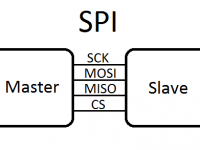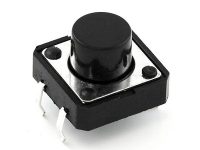Wireless Sensor Networks
There is no iota of doubt that modern world is heading towards smart and bright future which very strongly presents the need of smart environment. The concept of smart environments highlights the requirement of gathering the data from the real world with the help of sensors just like human beings receive the sensory data from the surroundings using sense organs and using that collected data for diverse application areas including environmental, medical, military, transportation, entertainment, crisis management, homeland defence, and smart spaces. Such conduct has been shown by Wireless Sensor Networks that consist of various sensors communicating wirelessly, data collected by which is used to its maximum potential in plenty of applications.
An aggregation of various nodes, where each node possesses data processing capabilities, which as a whole can act a conjunctive network is called a Wireless Sensor Network. WSN is mainly based on comprehending the sensory data from the surrounding environment and transmitting it through the network and to the external environment in order to achieve a predefined turnout, in the domains of both quality and quantity. Apart from data processing capabilities, a particular node also comprises of multiple memory types, RF transceiver (usually an omni-directional antenna), and power source (may be solar or through a battery). Wireless communication among the nodes and their potential to arrange themselves into a network in the needful manner makes them highly utile in cases where connections made through wires or cables are airy. Since the sensors need to sense the data from the surrounding physical environment, they need to be in the proximity of the area of interest. The ease of installation and maintenance, speed to perform the coveted task and the self organising and processing capabilities make WSN highly reliable and efficient. Moreover, their ability to function unattended makes them a better choice.

The accumulated data from the sensors by the data processor i.e. the microcontroller present in each node of the network is integrated into packets of data which are then transmitted wirelessly to other Sensor Networks (SN) and to the Base Station (BS) based on the location of the other SN and algorithm.
The power source used for each node is the battery/cell that has a limited lifetime and it is unmanageable to replace battery source in the regions where these sensor nodes are positioned according to their highly diverse applications. Hence, it is necessary to reduce the power consumption to the maximum possible limit. This power management can be done at two levels: hardware and software. At hardware level, energy can be salvaged from renewable and easily available sources of energy such as wind, motion or solar cells. Using improved low power batteries, microcontrollers and circuits can also prove to be a good option. Switching on the power only for the duration of use is the smartest way for the accomplishment of this goal. While at the software level, minimizing communications and creating schedules for nodes for sleep/wake-up can be done.
Although WSN systems utilize scarce power, are real-time and can even function in critical locations, the sensor nodes are highly prone to energy drainage and failure. In most of the cases, the energy source might be irreplaceable, for which new nodes have to be setup, causing a great deal of inconvenience. This leads to the need of constant source of re-energizing the network, absence of which can lead to energy imbalance among the nodes. This tends to reduce the efficiency and performance of the whole system and can have negative impact on their usage.
Working of a WSN system is mainly based on a routing algorithm that decides the direction of movement of data through the nodes. The more efficient the routing algorithm, more efficient is the WSN. A WSN system consists of sensor nodes, sink node and management node. In the concerned area of interest, many sensor nodes are employed that collect data and transmit it to sink node, via other nodes after a multi-hop routing which finally reaches to the management node through wired or wireless internet.
The fact that energy, capability of signal processing, storage and communication of the sensor nodes are quite limited, drives to the need of using energy efficiently. Since a good protocol design should be able to perform well in every field, including performance and energy, it can be realised that cluster-based routing algorithm is better than non-cluster based algorithm.
In WSN, LEACH (Lower Energy Adaptive Clustering Hierarchy) protocol is assumed to be a near to perfect algorithm, reason being it assures no failure due to uneven terrain, connectivity and packet dropping. According to this protocol, nodes self-organise themselves into clusters and one of them is considered as cluster head. The process for choosing the cluster head is totally random, any of the nodes can be taken as the cluster head of a particular system. The operation includes two phases, the first, cluster building phase includes formation of a cluster by the close nodes and the random selection of the cluster head, while the other, stable data communication phase involves transmission of data from various nodes in the cluster to the sink node, done by fusing the data by cluster head to the sink node. But since data needs to be fused, more energy is consumed than ordinary nodes. LEACH protocol also ensures that each node has equal probability to be selected as a cluster head which causes each node to consume relatively equal amount of energy, and hence, the problem of energy inefficiency can be subdued.
The randomness in the procedure of selecting the cluster heads, multi-path attenuation in communication between sink node and cluster nodes and limited anti-attack ability are some of the disadvantages of the LEACH protocol which can be overcome by improving the protocol algorithm for cluster head selection and hence, making it less random and also, the communication network between all the nodes.

Keeping in mind the large number of applications and benefits, it can be said that it is not unreasonable to expect that in 10-15 years the world will be covered with Wireless Sensor Networks with access to them via the Internet.









